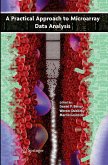Computational systems biology is the term that we use to describe computational methods to identify, infer, model, and store relationships between the molecules, pathways, and cells (''systems'') involved in a living organism. Based on this definition, the field of computational systems biology has been in existence for some time. However, the recent confluence of high-throughput methodology for biological data gathering,genome-scalesequencing,andcomputationalprocessingpowerhasdrivena reinvention and expansion of this field. The expansions include not only modeling of small metabolic (1-3) and signaling systems (2, 4) but also modeling of the relati- ships between biological components in very large systems, including whole cells and organisms (5-15). Generally, these models provide a general overview of one or more aspects of these systems and leave the determination of details to experimentalists focused on smaller subsystems. The promise of such approaches is that they will elucidate patterns, relationships, and general features, which are not evident from examining specific components or subsystems. These predictions are either interesting in and of themselves (e. g. , the identification of an evolutionary pattern) or interesting andvaluabletoresearchersworkingonaparticularproblem(e. g. ,highlightapreviously unknown functional pathway). Two events have occurred to bring the field of computational systems biology to theforefront. Oneistheadventofhigh-throughputmethodsthathavegeneratedlarge amounts of information about particular systems in the form of genetic studies, gene and protein expression analyses and metabolomics. With such tools, research to c- sidersystemsasawholearebeingconceived,planned,andimplementedexperimentally on an ever more frequent andwider scale.
Hinweis: Dieser Artikel kann nur an eine deutsche Lieferadresse ausgeliefert werden.
Hinweis: Dieser Artikel kann nur an eine deutsche Lieferadresse ausgeliefert werden.
From the reviews: "The new volume of the Humana Press 'Methods in Molecular Biology' series, entitled 'Computational Systems Biology,' consists of 25 chapters authored by 57 specialists in the field. ... This book contains a wide collection of methods that ... gives a broad review of this fascinating and quickly developing field. ... for a computational biologist, it is a fascinating read, a broad and comprehensive resource on the current methods and approaches." (Borys Wróbel, Acta Biochimica Polonica, Vol. 56, December, 2009)








